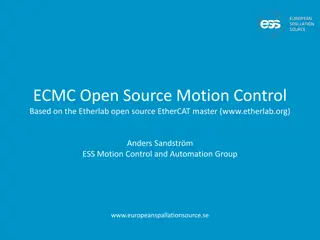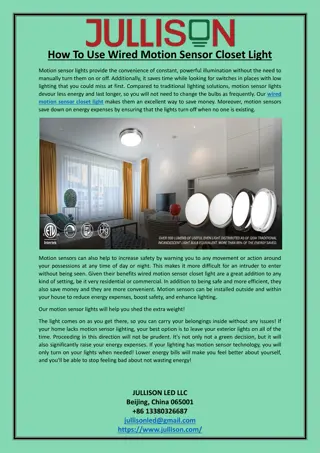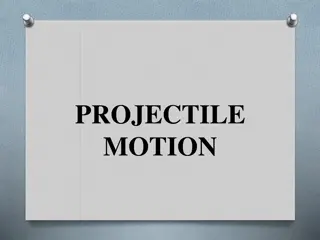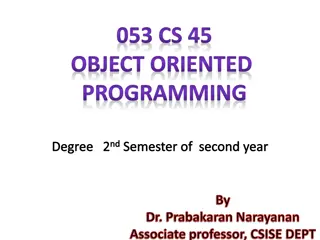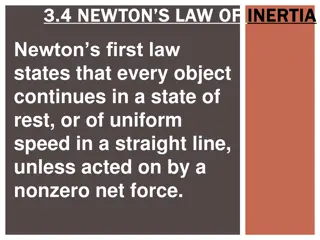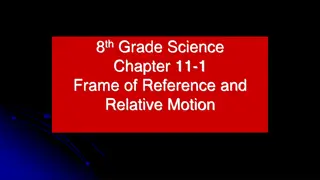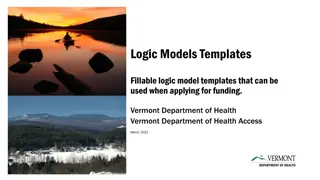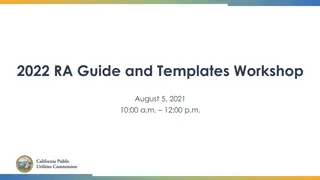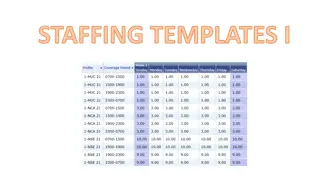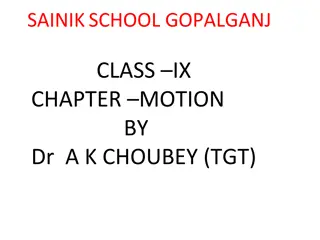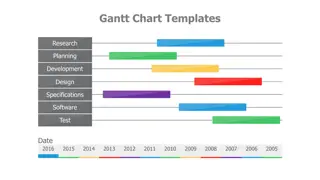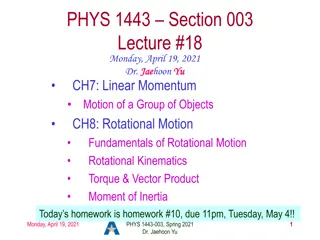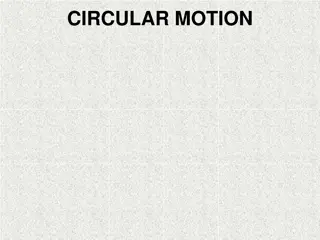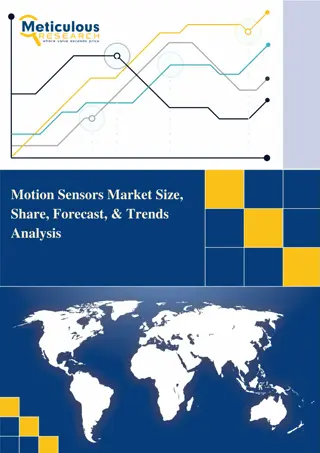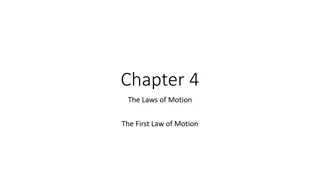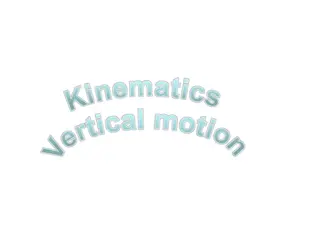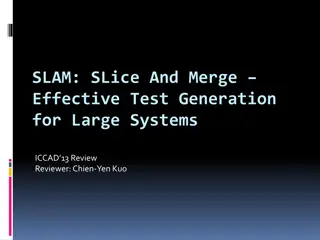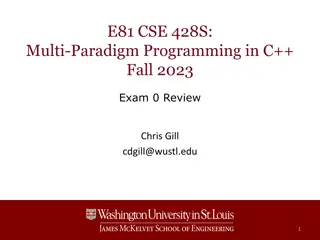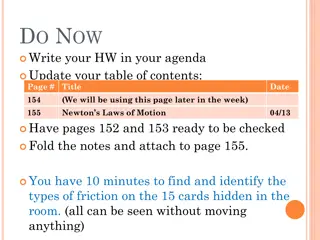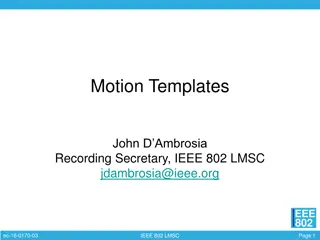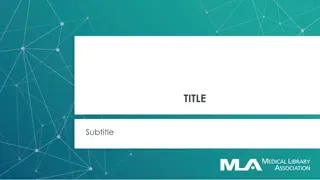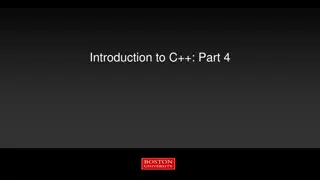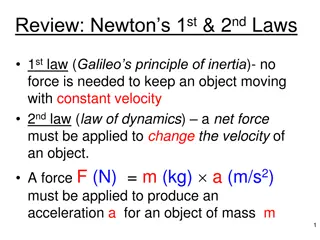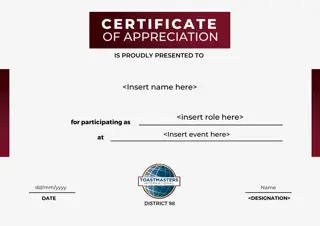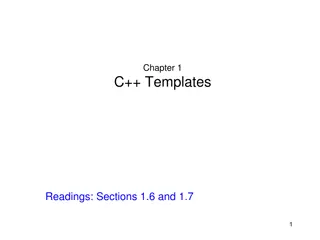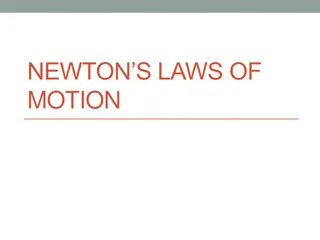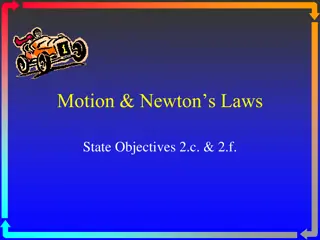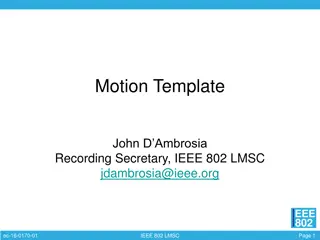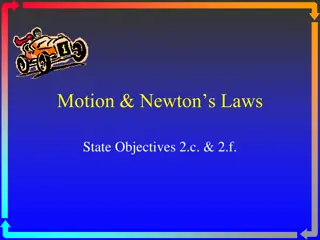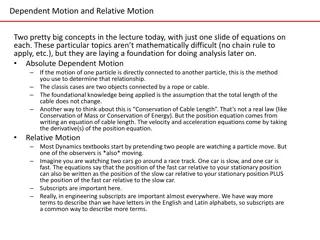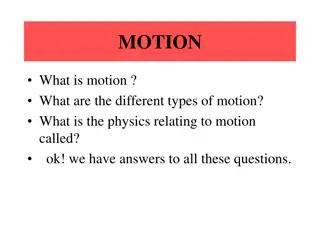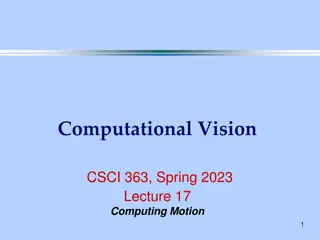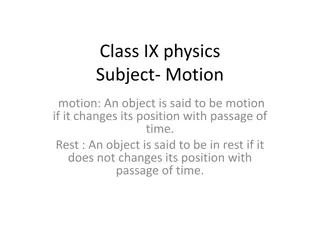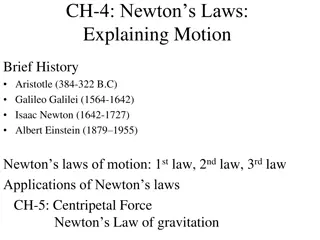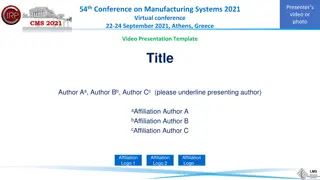Building Linux Boot Files with Templates for Multiple SoC Projects
Explore the intricacies of building Linux boot files using templates for various System on Chip (SoC) projects. Learn about Petalinux, Yocto, and the composition of Yocto recipes. Discover the advantages of decoupled layers in a typical Petalinux project and set goals to create your own Yocto layer.
7 views • 28 slides
ECMC: Open Source Motion Control with EtherCAT Overview
ECMC is an open-source motion control module designed for EPICS environments, integrating EtherLab's EtherCAT master. It offers advanced features like synchronized motion, distributed clocks, and PLC functionalities, making it ideal for various automation applications. The system architecture and ha
1 views • 42 slides
How To Use Wired Motion Sensor Closet Light
Motion sensor lights provide the convenience of constant, powerful illumination without the need to manually turn them on or off. Additionally, it saves time while looking for switches in places with low lighting that you could miss at first. Compared to traditional lighting solutions, motion sensor
1 views • 1 slides
Projectile Motion: Characteristics, Examples, and Formulas
Projectile motion involves the motion of objects under the influence of gravity, with both vertical and horizontal components. This type of motion is seen in activities such as throwing a ball, kicking a football, or dropping objects. The motion is described by specific formulas, including calculati
2 views • 19 slides
Function Templates and Generic Programming in C++
Dive into function templates and generic programming in C++, exploring how to create reusable code for multiple data types. Learn about generic function templates, class templates, and how to declare function templates efficiently. Enhance your understanding of type-independent patterns and how to i
1 views • 32 slides
Newton's First Law of Inertia
Newton's first law of inertia states that objects remain at rest or in uniform motion unless acted upon by an external force. This law, also known as the law of inertia, explains how objects tend to maintain their current state of motion unless influenced by an external force. Objects at rest stay a
0 views • 14 slides
Motion: Frames of Reference and Relative Motion
Motion is defined as a change in position over time. To describe motion accurately, one needs to understand frames of reference and relative motion. Frames of reference are systems of objects used to determine if something is in motion, while relative motion involves movement in relation to a refere
3 views • 14 slides
Logic Model Templates for Funding Application by Vermont Department of Health
Create effective logic models using fillable templates provided by the Vermont Department of Health to streamline the funding application process. These templates cover goal statements, inputs, activities, outputs, outcomes, and resources required to achieve desired results across short, mid-term, a
0 views • 4 slides
2022 RA Guide and Templates Workshop Logistics and Agenda
The "2022 RA Guide and Templates Workshop" hosted by the California Public Utilities Commission covers topics like CPE implementation, RA compliance process, and new features in templates and guides. Key sessions include CPE Implementation Overview, RA Guide Modifications, and RA Templates Demonstra
0 views • 18 slides
Essential Guidelines for Updating Staffing Templates
Staffing templates play a crucial role in budgeted staffing plans and capacity management. Learn about the types of templates, how to update them, and the importance of maintaining accurate staffing information for efficient scheduling and reporting purposes.
0 views • 12 slides
Motion: Concepts and Definitions in Physics
Motion in physics is defined as the change in position of an object over time. It involves concepts like rest, motion, distance, displacement, rate of motion, and types of motion. Rest and motion are relative to a reference point, while distance and displacement differ in their scalar and vector nat
2 views • 25 slides
Introduction to Kinematics and Dynamics of Machines in Mechanical Engineering
Theory of Mechanics delves into motion, time, and forces, with Kinematics focusing on motion analysis without considering external forces. Kinetics, a branch of Theory of Machines, deals with inertia forces resulting from mass and motion. Dynamics combines Kinematics and Kinetics to study motion and
0 views • 14 slides
Gantt Chart Templates for Research and Development Projects
Explore a collection of Gantt chart templates for planning, development, design, specifications, software testing, and more spanning several years. These templates offer a structured approach to organizing tasks and timelines for successful project management.
0 views • 4 slides
Linear and Rotational Motion in Physics
Explore the concepts of linear momentum, center of mass, rotational motion, and angular displacement in physics. Learn how to determine the center of mass of objects, analyze motion of particle groups, and understand the conservation of momentum in systems under external forces. Delve into the funda
0 views • 18 slides
Circular Motion in Physics
Circular motion involves objects moving in a circular path at a constant speed, experiencing acceleration and centripetal force. This motion is characterized by angular speed, centripetal acceleration, and the necessary centripetal force. The concept of uniform circular motion and angular displaceme
3 views • 38 slides
Motion Sensors Market Size, Share, Forecast, & Trends Analysis
the increasing use of motion sensors in the healthcare industry, the growing adoption of motion capture technology (MOCAP) in the gaming industry, and the increasing adoption of wireless motion sensors are expected to create market growth opportunities.
1 views • 4 slides
Newton's First Law of Motion
Exploring the foundational concepts of motion and forces, this content delves into Isaac Newton's First Law of Motion. Describing how objects behave when the net force acting on them is zero, the law highlights the significance of inertia and balanced forces in determining an object's state of rest
0 views • 9 slides
Vertical Motion and Gravity in Kinematics
Explore the principles of vertical motion and gravity in kinematics through scenarios involving throwing objects, free-fall motion, and calculating heights. Learn how to model vertical motion with acceleration due to gravity, find maximum heights of thrown objects, solve extended problems, and under
3 views • 12 slides
Efficient Test Generation for Large Systems Using SLAM
This research discusses SLAM (SLice And Merge), a method for effective test generation in large systems. It focuses on using test templates to generate test cases efficiently, slicing the system into subsets with different templates assigned to each slice, and merging multiple templates for thorough
0 views • 22 slides
Multi-Paradigm Programming in C++: Exam Review and Guidelines
The review provides important details about the upcoming exam in CSE 428S course, covering topics such as exam time and location, studio submissions, exam format, allowed materials, function templates, and class templates in C++. It explains the expectations, guidelines, and considerations for the e
0 views • 39 slides
Streamlining Station Registration Process with Class Templates
Revolutionize the station registration process through the use of class templates, reducing manual input time and repetitive steps. Explore how templates can simplify the registration, editing, and closing procedures for various station types. Discover the concept of templates and examples like Surf
0 views • 22 slides
Newton's Laws of Motion
Explore the fundamental concepts of Newton's Laws of Motion, including net forces, combining forces, balanced versus unbalanced forces, and the concept of inertia. Learn how these principles explain the behavior of objects in motion and at rest, and discover the impact of mass on an object's resista
0 views • 17 slides
Joint Motion: Osteokinematic and Arthrokinematic Movements
Joint motion involves osteokinematic movements, which are under voluntary control and include flexion, extension, and more. End-feel sensations like bony, capsular, and springy block indicate different joint conditions. Arthrokinematic motion refers to how joint surfaces move during osteokinematic m
1 views • 17 slides
IEEE 802 LMSC Motion Templates Overview
This document outlines the purpose, normative status, scope, linguistic style, and tabular format of motion templates within the IEEE 802 LMSC. The aim is to improve the quality of EC work by reducing incomplete or ambiguous motions, resulting in more efficient preparation and debate processes. Thes
0 views • 26 slides
Slide Templates for Professional Presentations
Explore a variety of visually appealing and organized slide layouts that can help enhance your presentations. From title and content layouts to smart art designs, these templates offer a structured and engaging way to showcase your information effectively. Whether you need a chart layout or a table
0 views • 11 slides
Introduction to C++: Part 4 - Generics and Templates
Explore the concepts of generics and templates in C++, including syntax, compilation process, and utilization of the C++ Standard Template Library (STL). Learn about object-oriented programming (OOP) principles like encapsulation, inheritance, polymorphism, and abstraction. Discover the power of pol
0 views • 43 slides
Newton's Laws of Motion
Newton's Laws of Motion explain the relationship between forces and motion. The first law states that an object in motion stays in motion unless acted upon by a net force, while the second law describes how force is related to an object's mass and acceleration. The third law states that for every ac
0 views • 21 slides
District 98 Certificate of Appreciation Templates
Explore beautifully designed District 98 Certificate of Appreciation templates for acknowledging participants at Toastmasters events. Customize these templates with recipient names, roles, event details, and more. Download the editable Canva template to create personalized certificates easily.
0 views • 5 slides
C++ Templates: Generic Programming and Function Templates
Exploring the concepts of C++ templates including type-independent patterns for working with various data types, generic class patterns, function templates, and their usage. The reading covers examples of function templates for finding maximum values in vectors and highlights the importance of clear
0 views • 12 slides
Newton's Laws of Motion
Newton's Laws of Motion describe how objects behave in response to external forces. The first law states that objects in motion remain in motion unless acted upon by a force, while objects at rest stay at rest. The second law relates force, mass, and acceleration, showing how they are interconnected
0 views • 11 slides
Motion and Newton's Laws
Explore the concepts of motion, distance, speed, and velocity as they relate to Newton's Laws of Motion. Learn about measuring motion, calculating speed, graphing motion on distance-time graphs, and understanding velocity. Discover how motion is constant and how relative motion is used. Practice cal
0 views • 36 slides
Motion Template Improvement for IEEE 802 LMSC EC
The motion template aims to enhance the quality of work within the IEEE 802 LMSC EC by providing a structured format for proposing motions. By reducing ambiguity and unnecessary variations, these templates streamline the motion preparation process, saving time for all involved. The templates are inf
0 views • 31 slides
Motion and Newton's Laws
Motion is the constant change in position of objects, measured by distance and displacement. Speed is the rate of motion, while velocity includes direction. Graphing motion helps visualize speed changes over time. Newton's Laws explain the behavior of objects in motion.
0 views • 38 slides
Dependent and Relative Motion in Dynamics
Dependent Motion and Relative Motion are fundamental concepts in Dynamics, providing the foundation for future analysis. Dependent Motion involves constraints like ropes or cables, while Relative Motion considers observers in motion. Dynamics involves applying a limited set of equations in diverse w
1 views • 18 slides
Motion: Types and Physics
Motion refers to a body changing position with respect to its surroundings. Different types of motion include linear, rotatory, and oscillatory motion. The physics relating to motion is called Mechanics, which comprises Dynamics and Kinematics. Scalars and vectors play a crucial role in describing t
0 views • 8 slides
Motion Perception in Computational Vision
In computational vision, the concept of motion opponency plays a crucial role in how the brain processes left and right motion inputs. By examining psychophysical results and the construction of motion opponent energy filters, we explore how the brain handles motion information. Additionally, the Ve
0 views • 23 slides
Motion in Physics: Definitions and Examples
An object is said to be in motion if it changes position with time, while rest implies no change. Learn about types of motion such as linear and circular, as well as vibratory motion and reference points. Explore how objects can be in motion relative to one reference point while at rest relative to
0 views • 4 slides
Fortran Templates and Compiler-Driven Design Goals
Delve into the world of Fortran templates through a primer on generics, showcasing design goals set by the compiler. Explore syntax examples and motivating examples such as the AXPY subroutine, offering insight into the self-consistent nature of templates and their flexibility in parameter combinati
0 views • 9 slides
Evolution of Motion Theories: Aristotle to Einstein
Explore the progression of motion theories from Aristotle's belief in a force for motion to Galileo's discoveries on gravity, Newton's laws of motion, and Einstein's theories of relativity and quantum mechanics. Discover how our understanding of motion has evolved over the centuries, shaping the way
0 views • 20 slides
Presentation Templates for 54th Conference on Manufacturing Systems 2021
Create professional video presentation templates for the 54th Conference on Manufacturing Systems 2021 virtual event in Athens, Greece. These templates feature sections for authors, affiliations, and logos, ensuring a cohesive and visually appealing presentation format throughout the event.
0 views • 7 slides

